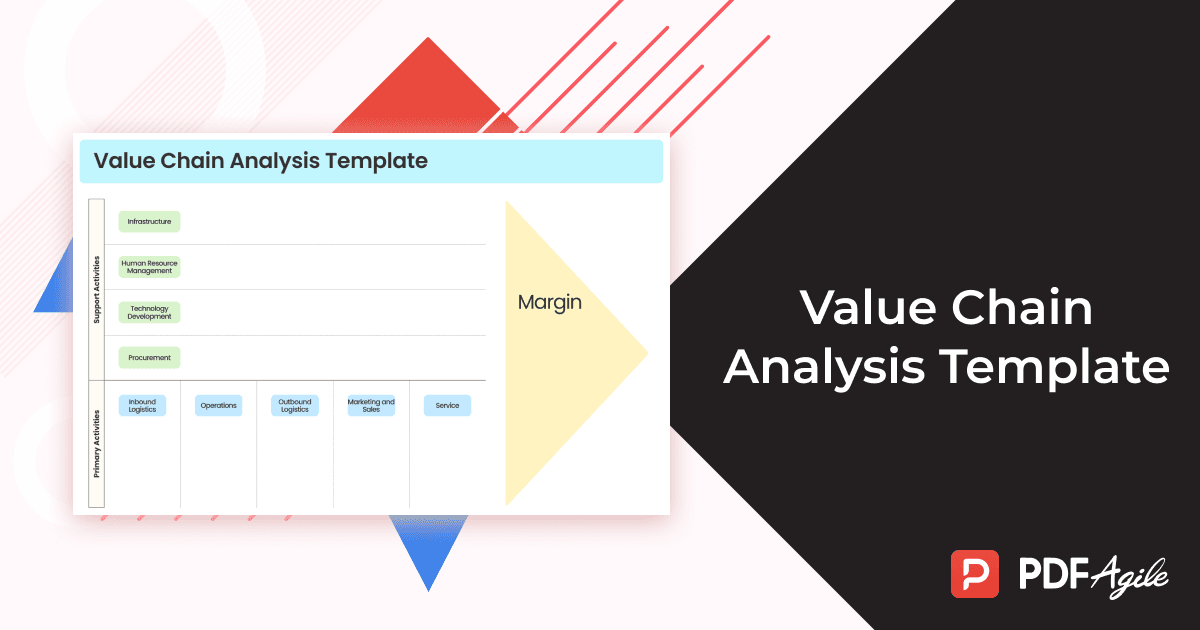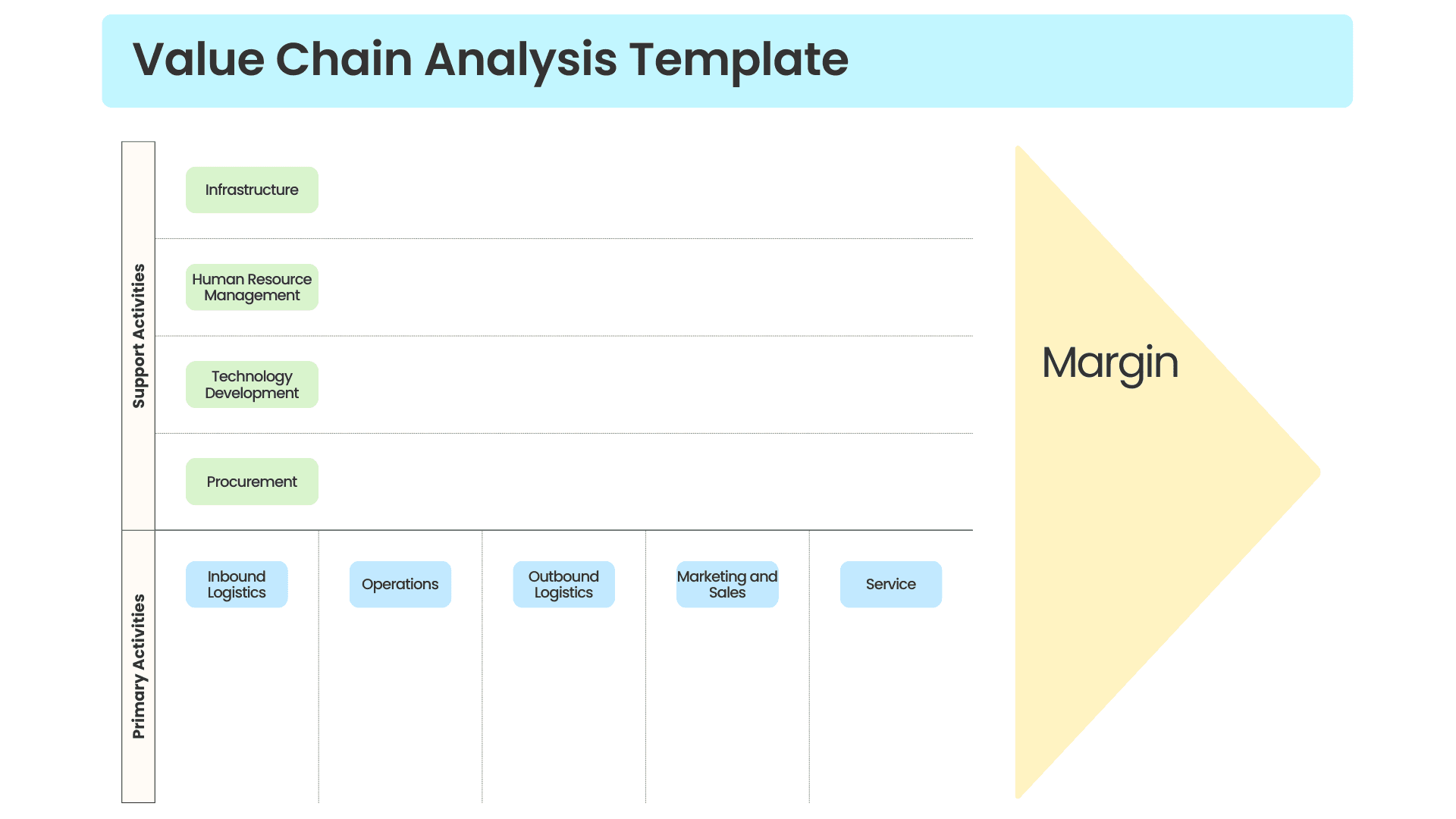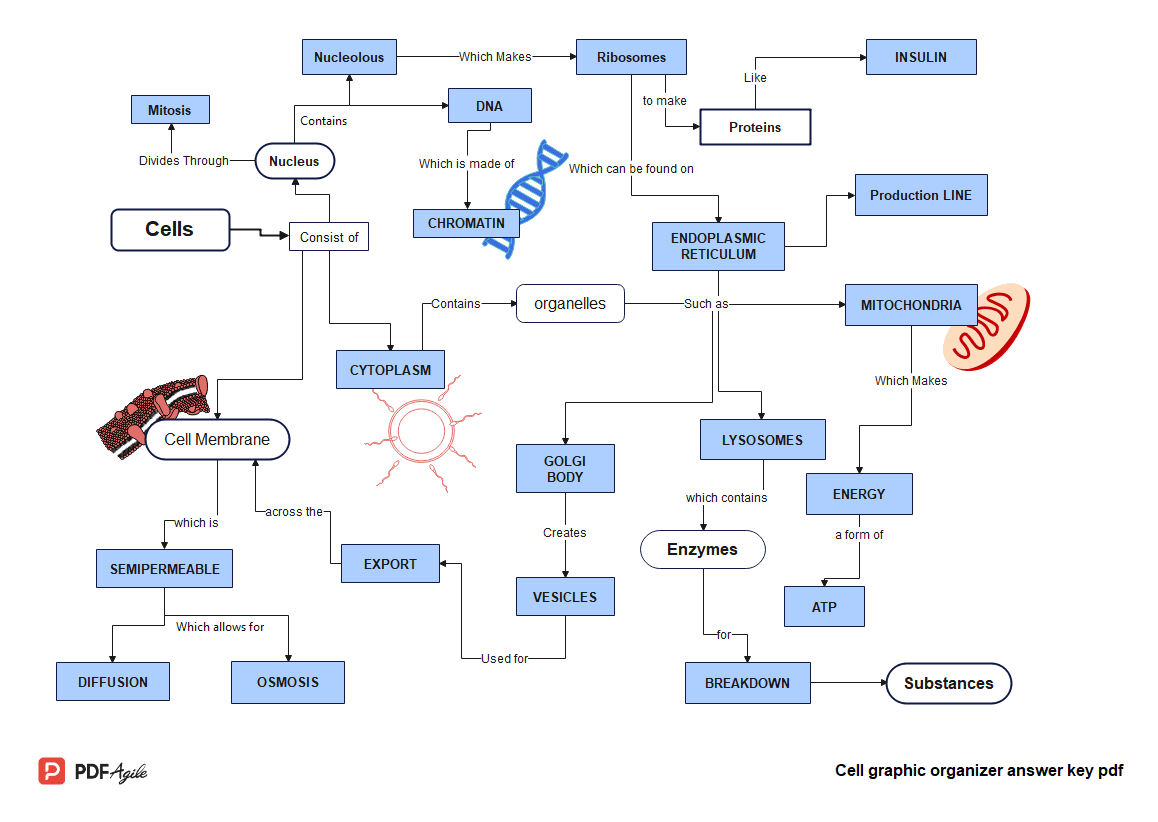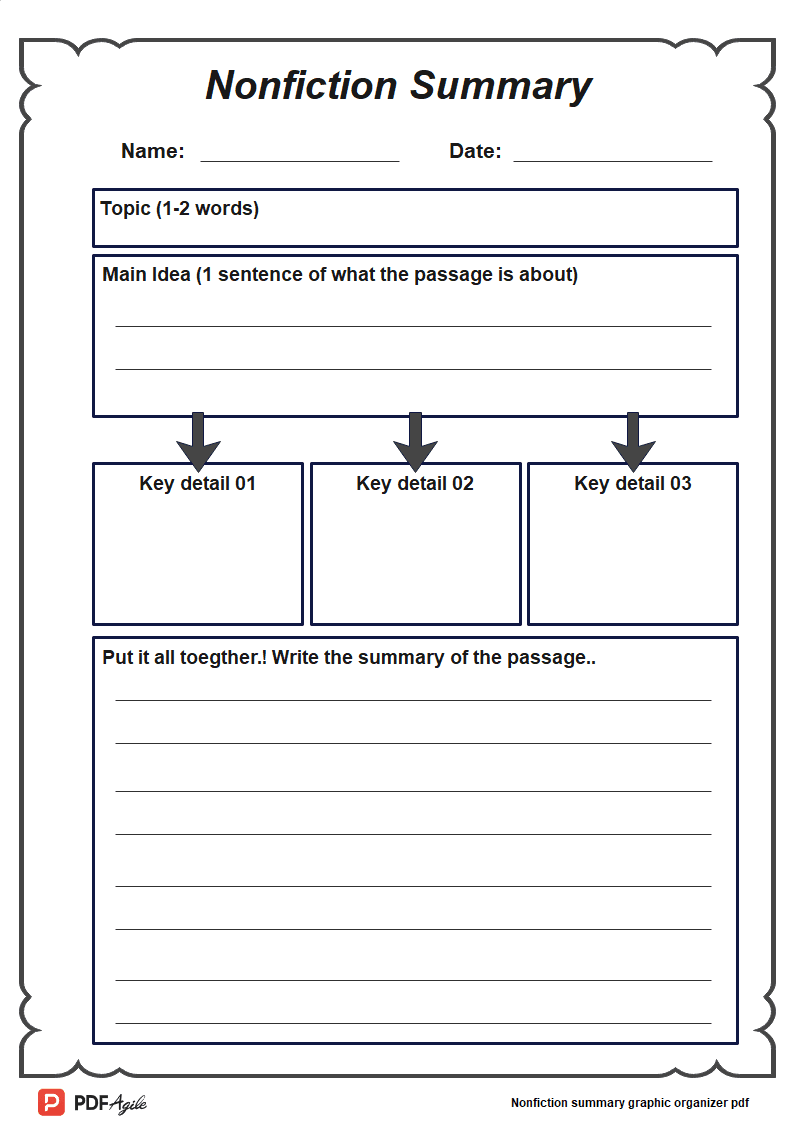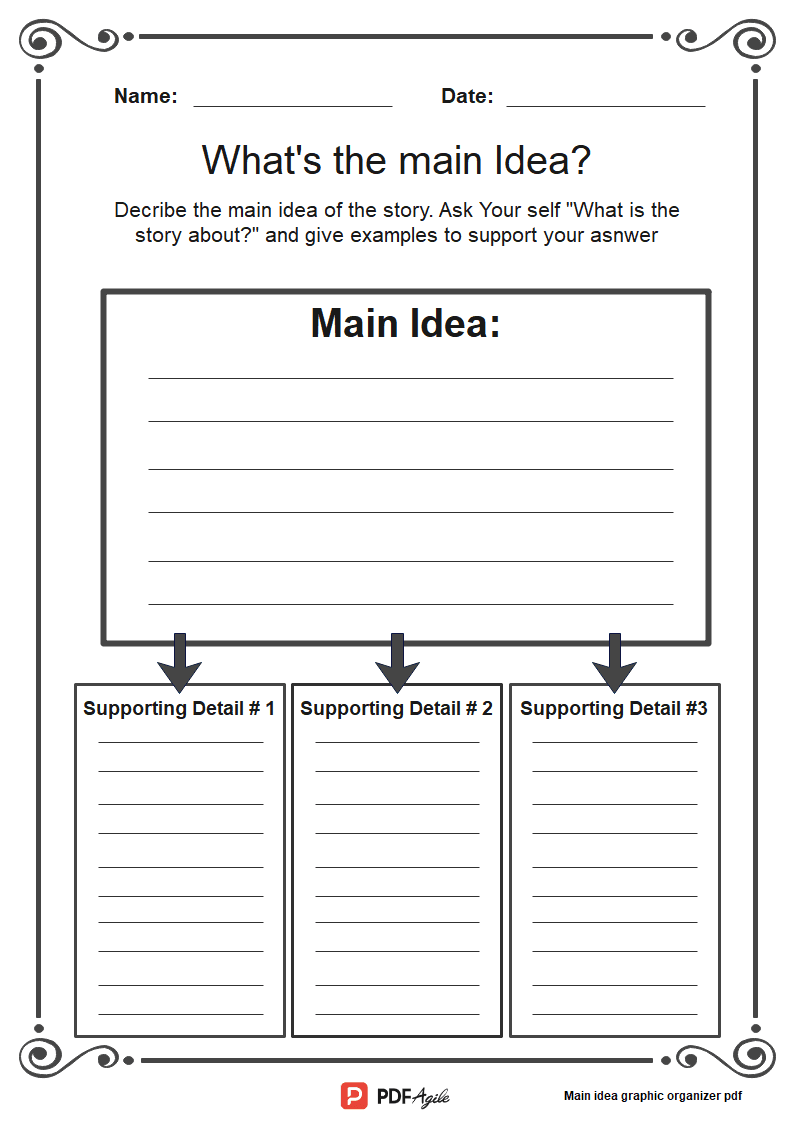Ever wonder if your business is truly operating at its peak potential? Are there hidden inefficiencies costing you time and money, or untapped opportunities to deliver even greater value to your customers? Value Chain Analysis provides a roadmap to uncover these crucial insights. And to navigate this complex landscape effectively, a well-structured Value Chain Analysis Template is your indispensable tool.
What is Value Chain Analysis?
Developed by Michael Porter, Value Chain Analysis is a strategic management tool that examines a company's activities as a chain, identifying which activities are the most valuable (i.e., those that provide the most value to customers) and which ones can be improved to provide a competitive advantage.
The value chain is broadly categorized into two main types of activities:
Primary Activities: These are the activities directly involved in the creation, sale, transfer, and servicing of a product or service. They typically include:
- Inbound Logistics: Activities related to receiving, storing, and distributing inputs to the product.
- Operations: Activities that transform inputs into the finished product or service.
- Outbound Logistics: Activities related to collecting, storing, and distributing the finished product to customers.
- Marketing and Sales: Activities involved in informing buyers about the product, inducing them to purchase it, and facilitating their doing so.
- Service: Activities related to maintaining or enhancing the value of the product after the sale.
Support Activities: These activities support the primary activities by providing purchased inputs, technology, human resources, and firm infrastructure. They include:
- Infrastructure: Activities that support the entire value chain, such as general management, planning, finance, legal, and government relations.
- Human Resource Management: Activities involved in the recruiting, hiring, training, development, and compensation of all types of personnel.
- Technology Development: Activities involved in the equipment, hardware, software, procedures, and technological knowledge brought to bear in the firm's transformation of inputs into outputs.
- Procurement: Activities involved in purchasing inputs such as materials, supplies, and other consumables as well as assets such as machinery, laboratory equipment, office equipment, and buildings.
Why Use a Value Chain Analysis Template?
While understanding the components of a value chain is crucial, applying this framework effectively across a complex organization can be challenging. This is where a Value Chain Analysis Template proves invaluable. Here's why:
- Structured Approach: A template provides a pre-defined structure, ensuring that all relevant activities are considered systematically. This reduces the risk of overlooking crucial areas.
- Consistency and Standardization: Using a template ensures consistency across different departments or business units within an organization, allowing for easier comparison and aggregation of data.
- Efficiency and Time-Saving: Instead of starting from scratch, a template offers a ready-made framework, saving significant time and effort in the initial setup and data collection phases.
- Clarity and Focus: A well-designed template helps to focus the analysis on key value-adding activities and their interrelationships.
- Improved Collaboration: Templates can facilitate collaboration among team members by providing a common platform for input and discussion.
- Actionable Insights: By organizing the information in a clear format, a template makes it easier to identify areas for improvement, cost optimization, and strategic differentiation.
Value Chain Analysis Example
To better understand how a value chain works in practice, here’s a sample analysis of Daily Brew Coffee, a fictional café chain. This breakdown shows how each activity contributes to the company’s operations and profit margin.
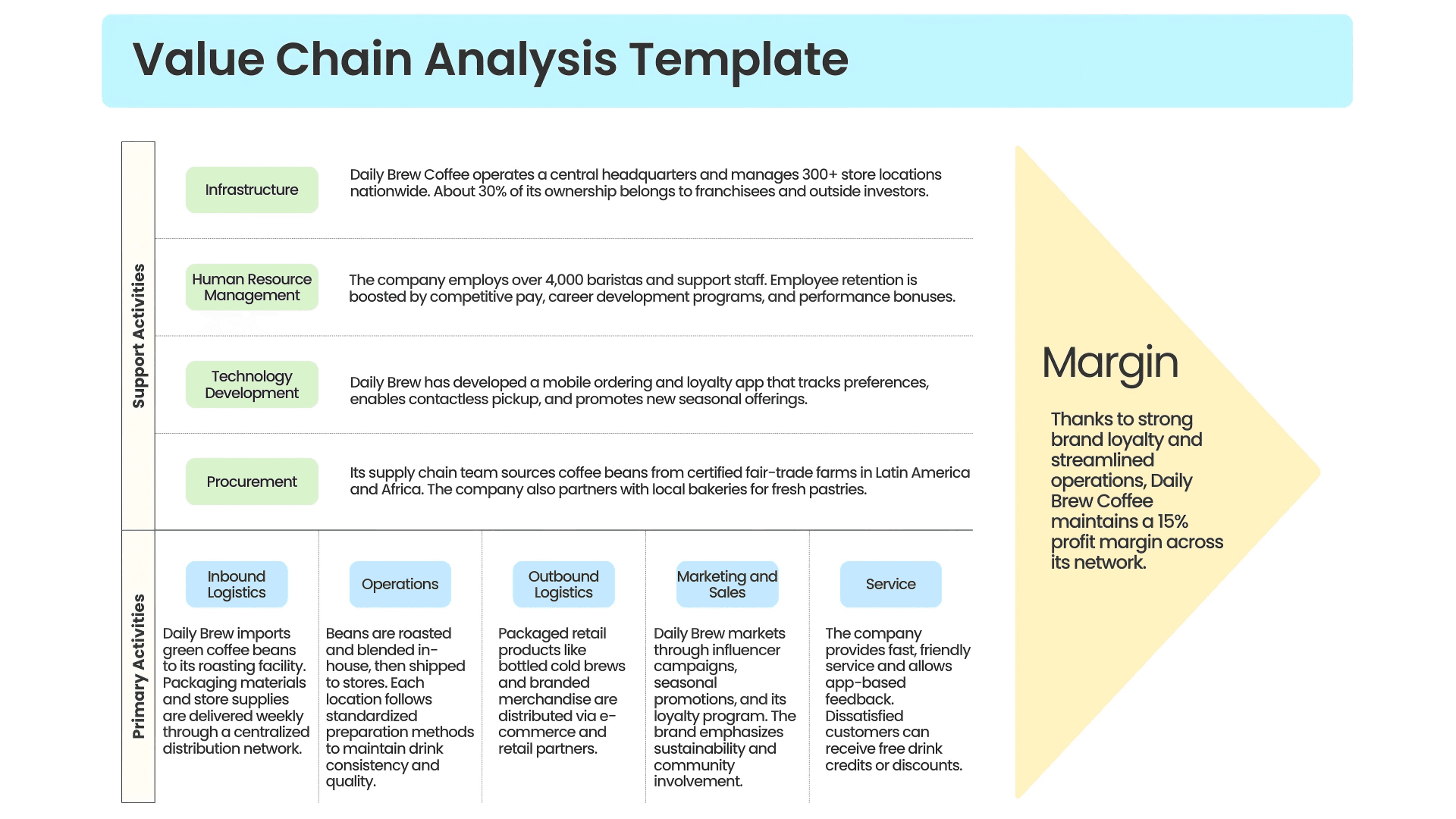
FAQs About Value Chain Analysis Templates
1. Who should use a value chain analysis template?
Business owners, strategists, operations managers, and consultants can all benefit from this tool.
2. How often should I update the value chain analysis?
Ideally, conduct an analysis annually or during major business changes.
3. Can small businesses use value chain analysis effectively?
Absolutely. VCA helps even small firms spot inefficiencies and improve customer value delivery.
Free Download: Value Chain Analysis Template
You can download the Value Chain Analysis Template mentioned above by clicking Use Template button on this page. Customize it to fit your specific needs and preferences.
